Country guides

Things to do in Croatia
Croatia's popularity as a European holiday destination has grown rapidly over the last few decades. There is much to see and do along its magnificent coastline, which boasts over 1,000 islands, islets and reefs. Most visitors come to Croatia for the cruises, boating and beaches, but the country also has cultural attractions and plenty of ancient history.
Many of Croatia's cities are built on the sites of Greek and Roman settlements dating from as far back as 400 BC. Visitors are encouraged to explore the Roman ruins in Zagreb and Split, stroll through the cobblestone streets of fairytale medieval villages or simply take in the local cuisine and history. The Croatian History Museum in Zagreb features an impressive display of Neanderthal remains, while culture vultures will enjoy a trip to the Croatian National Theatre in Zagreb.
Dubrovnik is one of Croatia's top holiday destinations, thanks to a picturesque Old Town and exquisite beaches along a rugged coastline. The breathtakingly beautiful Split is a great base for exploring the Dalmation Coast and is a UNESCO World Heritage Site. It also has such gems as the city of Trogir and Brac Island just off shore.
Spring and autumn are good seasons to visit as milder weather, fewer crowds and lower prices mean travellers can discover the country more freely. But summer (June to August) is the peak season because it's the best time to enjoy Croatia's stunning beaches.
Travelling by bus is economical, while ferries and catamarans are the only mode of transport to the islands, and a way of life on the coast. For a more relaxed but slightly more expensive option, hiring a car allows visitors to get off the beaten track and discover this Balkan gem at their leisure.
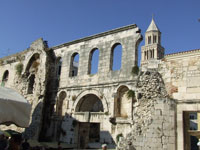
Diocletian's Palace
Diocletian's Palace is one of the world's most imposing ancient Roman structures. Built between the late third and early fourth centuries A.D., it is more than a palace or a museum…
Diocletian's Palace
Diocletian's Palace is one of the world's most imposing ancient Roman structures. Built between the late third and early fourth centuries A.D., it is more than a palace or a museum. Rather, it is Split's living heart, where visitors will find the labyrinthine streets packed with people, bars, shops and restaurants. The palace was constructed as a combined imperial residence, military fortress and fortified town, and its original structure has been added to continuously over the millennia.
The Roman emperor, Diocletian, commisssioned the palace to be finished in time for his retirement in A.D. 305, sparing no expense in its construction. Over the course of 10 years he transported lustrous white stone from the island of Brac, marble from Italy and Greece, and also columns and 12 sphinxes from Egypt for the sake of his project.
These days, visitors can often hear music in the palace and should note that the setting is particularly attractive in the evenings. When the sun sets, the marble and granite columns are usually illuminated by colourful garlands, and the palace's interiors become stages for actors in Roman togas.
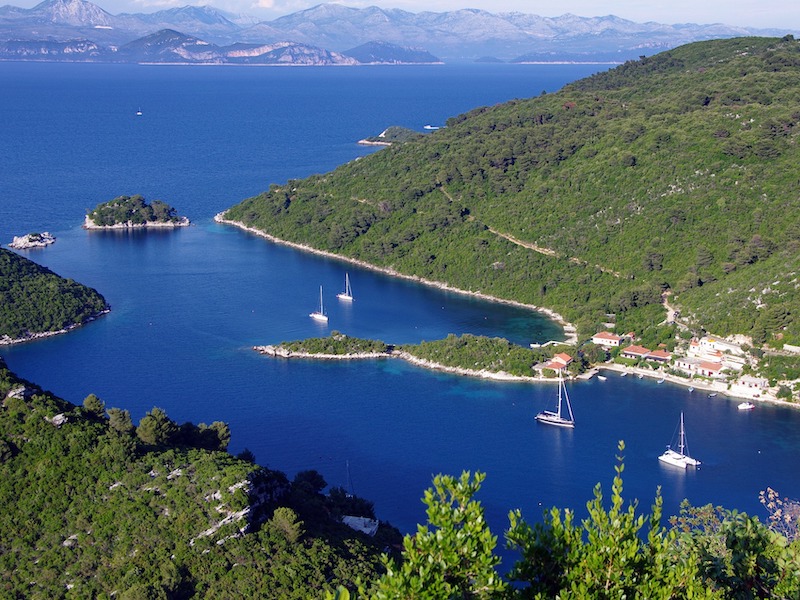
Mljet Island
Covered by small villages, forests and vineyards, Mljet is famous for its national park. Main attractions include the two saltwater lakes of Veliko Jezero and Malo Jezero, as well …
Mljet Island
Covered by small villages, forests and vineyards, Mljet is famous for its national park. Main attractions include the two saltwater lakes of Veliko Jezero and Malo Jezero, as well as a 12th-century Benedictine monastery. Mljet is said to be Croatia's greenest island, the beauty of the unspoilt oasis attracting nature lovers and those in search of peace and tranquillity. It's popular with couples because of the pristine natural beauty and lack of crowds, making it ideal for romantic getaways. It is also a great option for those who enjoy outdoor activities such as hiking, swimming, mountain biking, hunting, fishing and kayaking. There are regular ferry connections with Dubrovnik.
Website www.mljet.hr
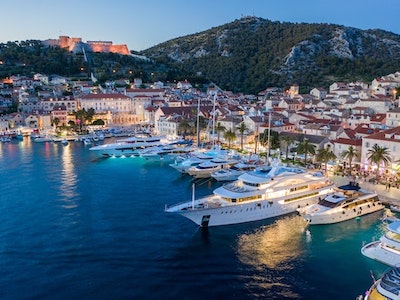
Hvar Island
The island of Hvar lies off the coast of Split and abounds with Romanesque and Renaissance buildings, and a true Mediterranean atmosphere. Inhabited since 3500 BC, it's now mainly …
Hvar Island
The island of Hvar lies off the coast of Split and abounds with Romanesque and Renaissance buildings, and a true Mediterranean atmosphere. Inhabited since 3500 BC, it's now mainly a wine-growing area, with the main towns of Vrboska and Jelsa famed for their Dalmatian vintages. Hvar is dotted with picturesque rural villages, many fairly untouched by time and tourism. The incredible Hvar Fortress is one of the island's must-see attractions. Reached by a fairly strenuous climb, it offers exquisite views of the whole town and harbour. No trip to Hvar would be complete without a visit to Dubovica Beach, which is often delightfully free of crowds.
Website www.hvar.hr
Croatian National Theatre
The building housing the Croatian National Theatre (or HNK Zagreb) is as much a national treasure as the world-class theatre, opera, music and ballet productions that take place on…
Croatian National Theatre
The building housing the Croatian National Theatre (or HNK Zagreb) is as much a national treasure as the world-class theatre, opera, music and ballet productions that take place on its stage. Construction began on the theatre building in 1894, with Croatian artist Vlaho Bukovac painting the ceremonial curtain and Viennese artist Alexander Goltz decorating the ceiling of the auditorium. At the entrance to the theatre, visitors can see the large ornate fountain called 'The Well of Life', which was designed by Croatian artist Ivan Meštrovic in 1905. The Croatian National Theatre has hosted famous artists and performers from all over the world, and culture enthusiasts shouldn't miss a show.
Website www.hnk.hr/en
Trakoscan Castle
Trakoscan is a legendary 13th-century Gothic castle that was home to various influential families for centuries. It eventually fell into abandoned disrepair in the second half of t
Trakoscan Castle
Trakoscan is a legendary 13th-century Gothic castle that was home to various influential families for centuries. It eventually fell into abandoned disrepair in the second half of the 18th century, when it belonged to the Draskovic family.
In the 1950s, the castle was taken over by the state and turned into a living museum that reconstructs life in a medieval castle. Visitors can explore four levels, including the dungeon, and finish their tour with a stroll through the surrounding parklands.
Trakoscan Castle is a spectacular journey for the imagination as it feels so authentic. Guests can wander with freedom through the stone corridors, up and down the winding staircases, and into the various rooms. It is also a great attraction for the younger children as the castle, lake, and forest settings transport the little ones to a fairytale world.
The castle features original artefacts from its history, including furniture and weaponry, and displays are informative and well laid out. Visitors can stop for a break at the restaurant by the lake.
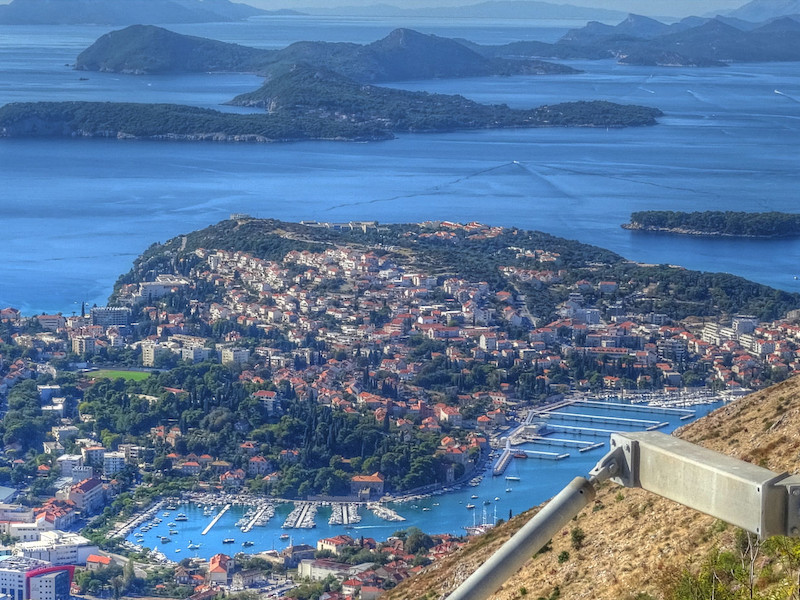
Elafiti Islands
A popular excursion from Dubrovnik is a day trip to the offshore islands of Kolocep, Lopud and Sipan. They are an escape from the mainland crowds, boasting olive groves, orchards, …
Elafiti Islands
A popular excursion from Dubrovnik is a day trip to the offshore islands of Kolocep, Lopud and Sipan. They are an escape from the mainland crowds, boasting olive groves, orchards, sand- and pebble beaches, and several interesting churches and monasteries. Lush, green Kolocep is the smallest island and the closest to Dubrovnik. Lopud is the most visited and is renowned for the sandy beach at Sunj. Sipan was a chic summer getaway of choice for 15th-century aristocratic families in Dubrovnik, and is fascinating from a historical point of view. Kolocep and Lopud are both car-free islands and easy to navigate on foot.
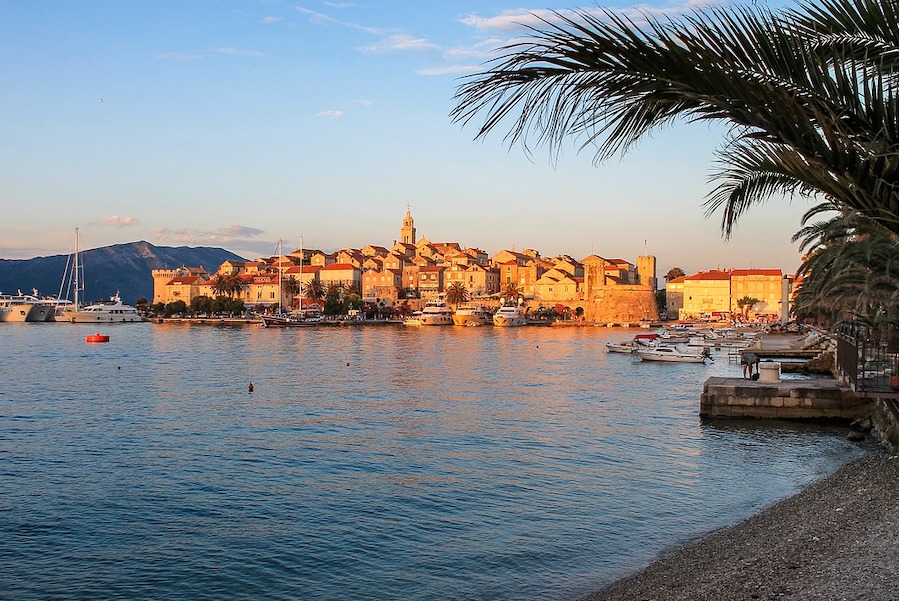
Korcula Island
Korcula Island is one of the biggest on the Adriatic, boasting verdant vineyards, dense pine forests, secluded beaches and olive groves. The main town juts out into the sea, and is…
Korcula Island
Korcula Island is one of the biggest on the Adriatic, boasting verdant vineyards, dense pine forests, secluded beaches and olive groves. The main town juts out into the sea, and is typically Dalmatian in character, with red-roofed houses and enclosing walls. Some sources say Marco Polo was born here and his rumoured house is now a museum open to the public. Korcula Town is also famous for its 15th-century Moreska sword dance, which is performed during summer.
Other towns on the island include Vela Luka and Lumbarda, which are surrounded by vineyards and coves. Korcula is said to have been a favourite Greek holiday spot over 2,000 years ago and, since then, it hasn't stopped delighting visitors with its culture and green landscapes. Of the 1,000 or so islands in Croatia, Korcula is often ranked most highly as a holiday destination.
Website www.korculainfo.com
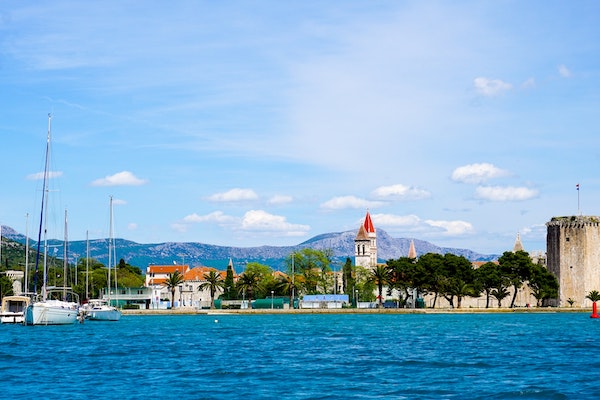
Trogir
The gorgeous historic town of Trogir is one of Split's most essential day trips. Set within medieval walls and connected to both the mainland and the island of Čiovo by bridges, t…
Trogir
The gorgeous historic town of Trogir is one of Split's most essential day trips. Set within medieval walls and connected to both the mainland and the island of Čiovo by bridges, this tiny island has retained many intact and beautiful buildings from its golden age between the 13th and 15th centuries. Today, it is a treasure trove of Renaissance and Baroque architecture, and Romanesque churches, and has deservedly been on the UNESCO list of World Heritage Sites since 1987. Summer nights are perfect for soaking up Trogir's laidback atmosphere, as everyone heads for the bars and cafes that line the wide seaside promenade.
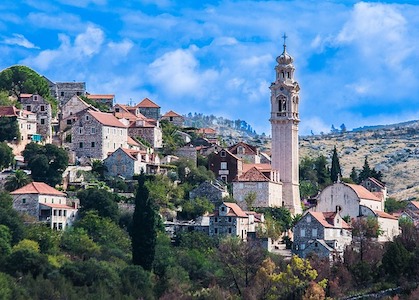
Brac Island
Bol and Supetar are the two main resorts on Brac, and have attractive old towns and laid-back charm. Brac is a great destination for a number of watersports, with Bol being the win…
Brac Island
Bol and Supetar are the two main resorts on Brac, and have attractive old towns and laid-back charm. Brac is a great destination for a number of watersports, with Bol being the windsurfing capital of Croatia. It also boasts a famous strip of beach that stretches out into the ocean, featuring on most Croatian tourist brochures. Like much of Croatia, the beaches on Brac Island are mainly rocky, boasting stunningly clear blue water and calm seas. Those desperate to find a sandy beach should head down to Lovrecina, which has its own beach bar and restaurant. Brac is generally less crowded than Split and other popular areas on Croatia's mainland, but can get busy during the peak summer months.
Website www.bracinfo.com
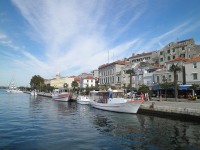
Sibenik
Sibenik is a historic town in central Dalmatia. Over the centuries, it has endured many rulers who have claimed it as their own, from Byzantium to the Kingdom of Bosnia. Naturally,…
Sibenik
Sibenik is a historic town in central Dalmatia. Over the centuries, it has endured many rulers who have claimed it as their own, from Byzantium to the Kingdom of Bosnia. Naturally, it's a product of this complex past, with a diverse tapestry of influences and rich cultural heritage. Sibenik is home to the Cathedral of St Jacob, the crowning glory of the Dalmatian Coast. The beautiful baptistery, domed roof and 71 stone heads on the exterior walls truly make this Renaissance cathedral a thing of divine beauty. The city also makes a good base from which to visit the nearby Krka National Park.
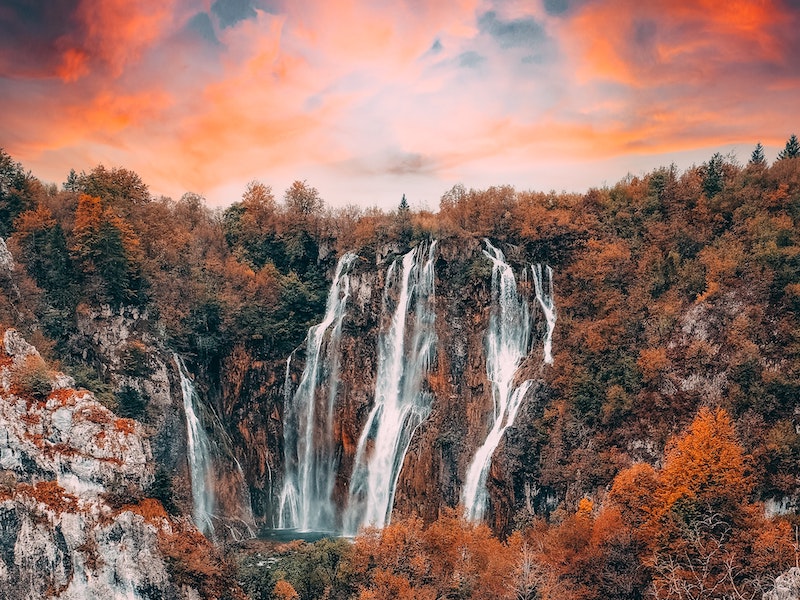
Plitvice Lakes National Park
Plitvice Lakes National Park is the breathtaking setting for extraordinary walking holidays, and lies just an hour inland. The lakes have been declared a UNESCO World Heritage Site…
Plitvice Lakes National Park
Plitvice Lakes National Park is the breathtaking setting for extraordinary walking holidays, and lies just an hour inland. The lakes have been declared a UNESCO World Heritage Site and the national park enclosing them is the oldest in Southeast Europe. Every year thousands flock to the unbelievable beauty of these 16 green and turquoise lakes, which are linked by waterfalls and surrounded by forest. Wooden walkways meander around and across the water, formed by mineral deposits that create terraces within the constantly changing limestone landscape. Visitors can cover the 11 miles (18km) of walkways on foot, but buses and ferries do service certain sections. The surrounding forests boast an extremely diverse variety of flora and fauna.
Website www.np-plitvicka-jezera.hr/en
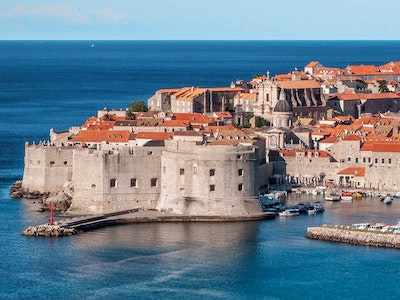
Dubrovnik Old Town
Dubrovnik's picturesque Old Town is the most renowned tourist destination in Croatia. Added to the UNESCO World Heritage List in 1979, it is one of the world's finest and best-pres…
Dubrovnik Old Town
Dubrovnik's picturesque Old Town is the most renowned tourist destination in Croatia. Added to the UNESCO World Heritage List in 1979, it is one of the world's finest and best-preserved medieval cities, and lies against a gorgeous backdrop of rugged limestone mountains.
The destination is perhaps best known for its medieval walls, which were laid out in the 13th century and became an ongoing project for almost two hundred years. The fortified walls are up to 10 feet (3m) thick on the sea side and at least twice as thick on the land side, reaching up to 82 feet (25m) in height. Any first-time sightseeing tour of the city should begin with a walk around these sturdy old ramparts, which incorporate fortresses, towers, and cannons along the way. From high up on the walls, visitors can enjoy amazing views over the Old Town rooftops and out across the glistening Adriatic Sea.
Dubrovnik's unforgettable Old Port is just a 10-minute bus ride away from the Old Town, and boasts fantastic sightseeing opportunities and intriguing, small markets along its tiny cobblestoned streets. The rich history and quaint shops of the Old Port make Dubrovnik a popular cruise port, with liners anchoring at the modern Port of Gruz less than two miles (2,5km) from the Old Town. Different kinds of boat tours depart from the harbour, offering visitors a wonderful chance to explore the stunning coastline and learn about the port's history. The detached sentinel of Lovrijenac Fort to the west of the Old Town is also worth a visit.
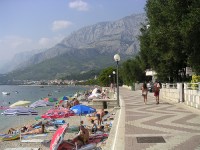
Makarska
Fringed by the two green peninsulas of Osejava and St Peter, Makarska's cobblestoned streets and natural harbour nestle in the shadow of Mount Biokovo. This beautiful town offers s…
Makarska
Fringed by the two green peninsulas of Osejava and St Peter, Makarska's cobblestoned streets and natural harbour nestle in the shadow of Mount Biokovo. This beautiful town offers secluded beaches washed by an azure sea and lies at the heart of the Makarska Riviera, which is characterised by pine forests and a string of white pebble beaches. Makarska's history has included occupations by the Venetians, Turks, French and Austrians, who all left imprints of their own culture and tradition. The town boasts a 16th century Franciscan monastery, a Venetian fountain, several churches and Baroque palaces. The main tourist district is lined with fashionable boutiques, cafes and bars, all a stone's throw away from the yachts and catamarans docked in the harbour.
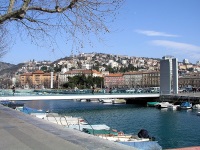
Rijeka
Rijeka is the commercial capital of the idyllic Adriatic Coast. More than simply a gateway to the beautiful coastal island resorts, this cultural city is a tourist's delight in its…
Rijeka
Rijeka is the commercial capital of the idyllic Adriatic Coast. More than simply a gateway to the beautiful coastal island resorts, this cultural city is a tourist's delight in itself, with its charming historic buildings and street cafes. It hosts an annual carnival with lively music and dancing that provides a glimpse into ancient Slavic folklore and mythology. Revellers don masks to scare away evil forces and there are numerous events, concerts and parades. There's also the remarkable Trsat Castle, which is reached by some formidable stone steps but is well worth the climb.
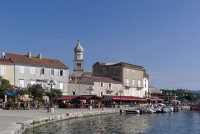
Krk Island
The largest island in the Croation Archipelago, Krk is a haven of sparkling beaches and lovely holiday towns. It enjoys a laid-back Mediterranean atmosphere, with Krk Town being th…
Krk Island
The largest island in the Croation Archipelago, Krk is a haven of sparkling beaches and lovely holiday towns. It enjoys a laid-back Mediterranean atmosphere, with Krk Town being the main tourist hub with its many restaurants, shops and bars found in the Old Town area. Nicknamed the 'Golden Island', getting to Krk from the mainland is made easy by an imposing 4,500 foot (1,4km) bridge.
The best beaches are found in Baska, with more than 30 of them connected by a promenade. Other beach towns on Krk include Njivice and the sandy coastline of Klimno Bay. Vrbnik is home to vineyards that produce some of the best white wines in Croatia, while the folk festival in Dobrinj draws crowds from far and wide.
Krk Island is popular for weekend excursions from the mainland and visitors can easily spend a week exploring the winding streets and hidden corners of the destination. A haven for watersports, bird watching and hiking, there is lots to see and do on Krk for just about anyone.


